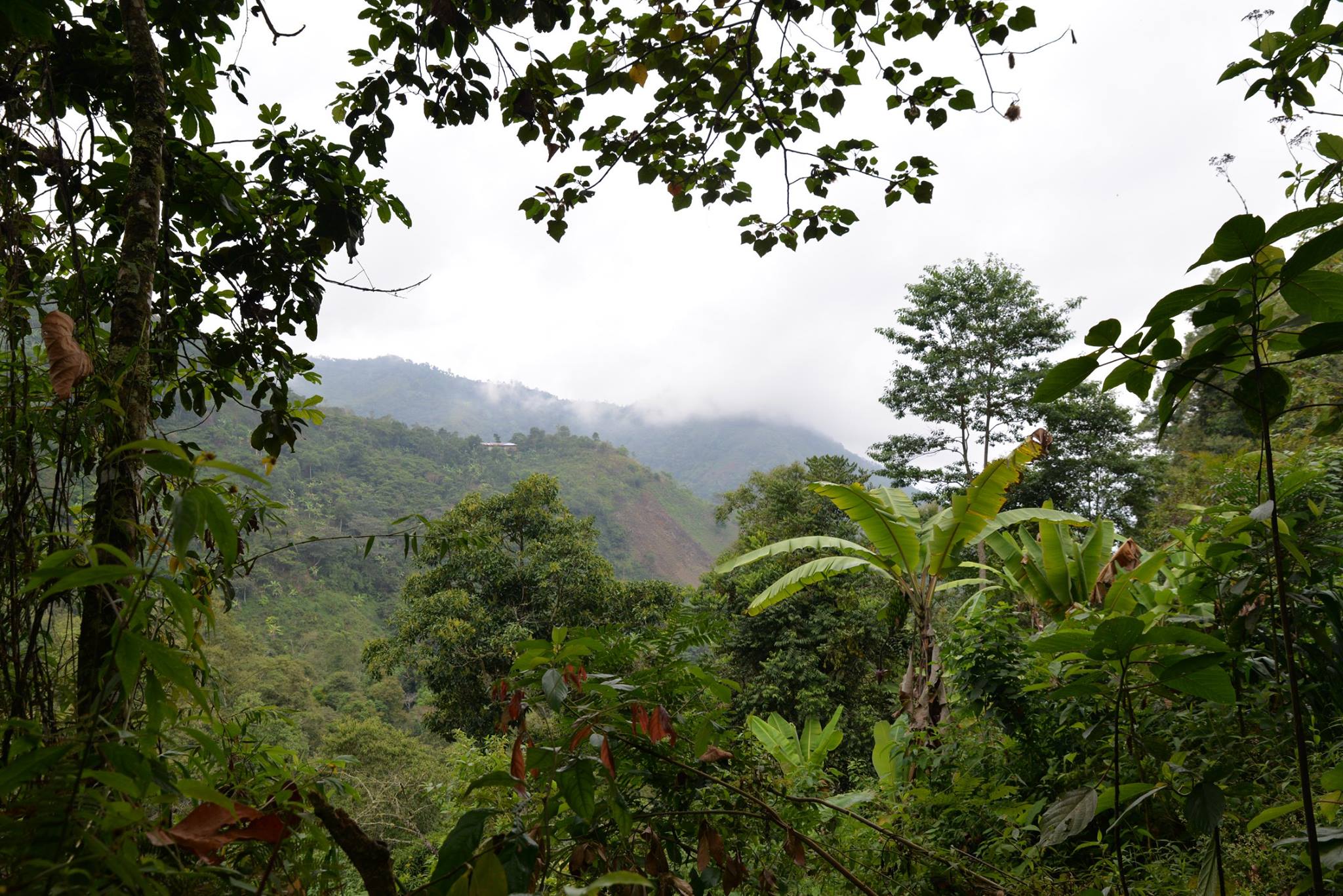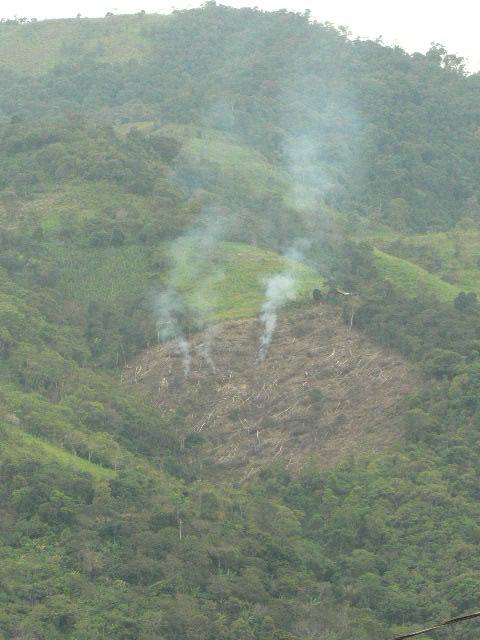By Lindsay Seventko, American Forests
This is part three of a three-part series exploring the importance of nutrient-rich and stable soil.
My foot slid out from under me and I froze, waiting for the ground to settle as a pillar of grey, ashy dust wafted out over the 8,000 foot drop like a cloud of smoke, hiding the valley below. The sand burned my throat and caked to the sweat on my face. As the earth settled, I forced myself to relax and continue gingerly stepping along the four-inch-wide trail, worn into the side of what felt like the world’s tallest sand dune. I could not believe I was right in the heart of one of the most fertile places on earth, northern Peru’s Andean rainforest, right in the middle of the rainy season.
I reminded myself of that fact, as I looked towards the towering palms waiting for me across the precipice. Never again would I take for granted the stability and softness of moist topsoil and spongy leaves. But, that thought did nothing to calm my nerves as I took another timid step across the cliff. And, as yet another cascade of sand gave way beneath my feet, I wildly grabbed at a coffee plant for stability and found myself clutching a fistful of leaves while the entire shrub dangled in front of me, sand and small gravel dripping from its scraggly roots. I stuffed it back down in the dust next to me, praying that the farmer hadn’t noticed.
I found myself walking across this precarious, dried-out mountainside on a trip with The Arbor Day Foundation, which sells shade-grown Peruvian coffee. Before this trip, shade-grown coffee was just a way to save a few trees when I had a little extra cash to spend, was feeling philanthropic or wanted to spoil myself on a premium blend in a hipster coffee shop. But right about now, it was beginning to feel more like a way to avoid seeing the world’s most lush ecosystem replaced by a desert wasteland.
Coffee Production in Peru
The world’s demand for coffee has exploded in the past few decades, and the ICO expects it to rise by another 25 percent within the next five years. This rapid growth created a new source of income for thousands of low-income Peruvians, many of whom had never farmed before. This economic opportunity, combined with few-to-no land rights in rural areas, encouraged new farmers to head out into the rainforest to slash and burn the trees and plant coffee. However, the deforested land quickly loses its fertility, and the farmer must move on to another patch of rainforest every five to seven years, leaving behind a wasteland of dry, infertile soil.
Deforestation’s Effects on the Andes
The entire Peruvian rainforest is already beginning to feel the effects of deforestation. As we drove for hour after terrifying hour on harrowing roads cut into the mountainsides, we saw deforested sections that had completely given way into landslides, smothering forest, roads and homes beneath layers of suffocating soil.
Drought has begun to plague areas that have never before had this issue, and the presidential campaign signs that we passed on rural roads clearly illustrated how the pressing issue of water security had even turned into a campaign platform. While it may be possible to temporarily alleviate symptoms of drought with more running water in rural areas of Peru, it was upsetting to realize that little was being done to address the main underlying cause of the drought — deforestation.
Ending deforestation in the Amazon is not as simple as passing a few laws. First, there is little-to-no way of enforcing such a policy in rural areas. Second, it would be leaving thousands of farmers who depend on their coffee harvest without an income, and of course, first-world consumers wouldn’t appreciate a coffee shortage. But, the situation is not without hope.
Coffee and the Rainforest, Coexisting
After the treacherous walk across the traditional coffee farm, the caravan from Arbor Day visited one of the shade-grown suppliers. As I walked under giant palms, plucked a guava and stepped over fallen branches, I could feel myself relax for the first time that day. This farm grew its coffee bushes right among the rest of the rainforest, where ground cover held the earth in place from erosion and large leafy trees provided a layer of organic material that decomposes into endless rich topsoil. Fruit and bean trees supplemented the farmer’s diet and increased not only his food sovereignty but also his financial security.
This trip into northern Peru changed my mindset about the urgency of addressing climate change. In the first world, we may be able to buy our way out of the worst effects of climate change for the time being but if things continue unchanged, there may come a time that the rainforest has turned to desert and there simply isn’t any water left to pump out of the aquifers no matter how much money we spend for it.
We need forests. Beyond recreationally, beyond aesthetically, beyond spiritually. We all deeply need forests for survival. Without them, there is no dark rich earth to grow our food in, no deep wide roots to hold the ground in place or to replenish our aquifers or to bring rain. Even if they’re not the forests in our backyard or state preserve or national park, the world’s forests intimately affect all of us.


